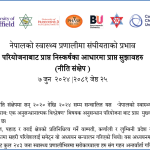Communicating your research for impact
Research communication is the process of communicating your research in an accessible way to audiences who can benefit from or put it into practice. How you communicate very much depends on who your audience is and how they prefer to receive information. It may be that you need to use a number of different methods of communication in order to reach the right people.
In age when digital technology surrounds us, there are many possible channels to choose from: a newspaper or magazine article, a TV or radio interview, a blog, social media, a website, a film, or more traditional means of communication through a briefing paper based on your research findings or a toolkit to be used by professionals in the relevant sector or press and public relations. Any combination of these could be appropriate, but your choice will depend on the message you want to convey and who you want to connect with.
BU has a number of ways to help you communicate your research including:
- Our research blog
- Our research website
- The news section of Bournemouth University’s main website
- Social media, including @BU_research Twitter account and main Twitter BU account
- Support to work with the media
- New research briefings, designed to be available online or taken to events, meetings or conferences
For more information about any of our communication channels, including the research blog, research website, briefings or Bournemouth Research Chronicle, please contact Emma Matthews, Research Communications Adviser in RDS or see BU’s staff intranet.











 Fourth INRC Symposium: From Clinical Applications to Neuro-Inspired Computation
Fourth INRC Symposium: From Clinical Applications to Neuro-Inspired Computation Writing policy briefs
Writing policy briefs Upholding Excellence: The Concordat to Support Research Integrity
Upholding Excellence: The Concordat to Support Research Integrity Today’s Documentation Will Serve Tomorrow’s Justice
Today’s Documentation Will Serve Tomorrow’s Justice ECR Funding Open Call: Research Culture & Community Grant – Application Deadline Friday 12 December
ECR Funding Open Call: Research Culture & Community Grant – Application Deadline Friday 12 December MSCA Postdoctoral Fellowships 2025 Call
MSCA Postdoctoral Fellowships 2025 Call ERC Advanced Grant 2025 Webinar
ERC Advanced Grant 2025 Webinar Horizon Europe Work Programme 2025 Published
Horizon Europe Work Programme 2025 Published Horizon Europe 2025 Work Programme pre-Published
Horizon Europe 2025 Work Programme pre-Published Update on UKRO services
Update on UKRO services European research project exploring use of ‘virtual twins’ to better manage metabolic associated fatty liver disease
European research project exploring use of ‘virtual twins’ to better manage metabolic associated fatty liver disease